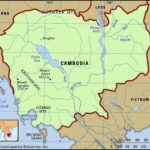Mallorca, a name that conjures images of sun-drenched beaches, turquoise waters, and charming Mediterranean towns. But where exactly is Mallorca Spain? This stunning island, also spelled Majorca, is the largest of the Balearic Islands, an archipelago belonging to Spain in the western Mediterranean Sea. As a former resident, I’m thrilled to guide you through everything you need to know about this captivating destination, from its location to its unique culture and lifestyle, helping you experience Mallorca like a true local.
Scenic Boquer Valley in Pollença, Mallorca, Spain, showcasing the island’s natural beauty.
Mallorca captivated me during my years living in Spain, offering a unique blend of Spanish and distinct Balearic culture. Having called Andalucía, Catalunya, and the Balearic Islands home, each region holds a special place in my heart. However, Mallorca, the largest of the Balearic Islands, has an enduring charm. My time living here from 2018 to 2021 allowed me to experience this pristine island as a local, an experience I deeply cherish.
While my career path led me away from island life, I believe Mallorca, Spain, is an ideal location for expats. The key is to appreciate and respect the mallorquíns and their rich cultural heritage. Mallorcan culture, while sharing similarities with the broader Balearic culture, possesses its own unique character, evident in its cuisine, language, and way of life. Let’s explore how to reach Mallorca, the best places to stay, authentic dining experiences, and how to navigate the island like a true mallorquín.
Salobrar de Campos in Mallorca, Spain, highlighting the island’s diverse landscapes.
Porta de Xara in Alcúdia, Mallorca, Spain, showcasing the island’s historical architecture.
Getting to Mallorca: Your Travel Options
The primary gateway to Mallorca, Spain, is Palma de Mallorca Airport (PMI), conveniently located just outside the capital city. Flying is the quickest and most common way to reach the island. Numerous airlines offer direct flights from major European and international cities, making Mallorca easily accessible.
Alternatively, for a more scenic journey, you can travel by ferry from Barcelona. While ferries take significantly longer, approximately 6-8 hours compared to a 50-minute flight, they offer a different perspective of the Mediterranean Sea. Balearia is a reputable ferry company serving the Balearic Islands, providing both day and overnight options. As a Balearic Islands resident, I benefited from a substantial 75% discount on travel between the islands and mainland Spain, a perk worth noting if you plan an extended stay.
Once you arrive in Mallorca, renting a car at the airport is highly recommended for exploring the island at your own pace. While a public bus system (Transports De Les Ils Baleares) connects major towns and attractions, a car offers greater flexibility, especially for reaching secluded beaches and mountain villages. Parking is generally manageable, though it can be more challenging during the peak tourist season from June to September.
Far d’Aucanada lighthouse in Alcúdia, Mallorca, Spain, a picturesque coastal landmark.
Aerial view of Palma de Mallorca, Spain, illustrating the city’s coastal location.
Port de Palma in Mallorca, Spain, showing the harbor and maritime activity.
Where to Stay in Mallorca: From Lively Resorts to Tranquil Villages
Mallorca offers a diverse range of locations to suit every travel style. Palma de Mallorca, the vibrant capital, is a must-visit, but the island boasts numerous other appealing destinations. Popular tourist spots include El Arenal and Magaluf, known for their lively atmosphere, and the charming mountain towns of Sóller, Deià, and Valldemossa, offering tranquility and stunning scenery.
Tourism is the backbone of the Balearic Islands’ economy. Many Mallorca residents work in hospitality or related industries. The island is also a sought-after location for Europeans, particularly British and German citizens, to purchase vacation homes, drawn by Spain’s favorable climate and relatively affordable property compared to their home countries.
El Arenal and Magaluf are magnets for party-goers, especially popular with German and British tourists respectively. If you seek a peaceful and relaxing vacation, these might not be the ideal choices. However, for those looking for social beaches and vibrant nightlife, they are certainly appealing. For a more serene Mallorca experience, consider the towns nestled in the Serra de Tramuntana mountain range like Sóller, Deià, and Valldemossa.
Valldemossa, perched on the northwest coast, holds a special memory for me as it was the destination of my first date with my former partner. Reaching these coastal pueblos involves driving along winding mountain roads offering breathtaking views. The northwest coast exudes romance, but driving in the mountains requires caution. Narrow roads and frequent cyclists demand slow driving and attentiveness. Mallorca is a renowned cycling destination, so sharing the road respectfully is essential.
Sa Cala Deia in Mallorca, Spain, a picturesque cove surrounded by natural beauty.
Sóller, Mallorca, Spain, nestled in a valley with palm trees and mountains.
Valldemossa, Mallorca, Spain, a charming village in the Serra de Tramuntana mountains.
Choosing Where to Live in Mallorca: City vs. Pueblo Life
Deciding where to live in Mallorca hinges on your transportation preferences and lifestyle. Smaller towns (pueblos) may offer local amenities within walking distance, but accessing Palma and the airport might be challenging without personal transport.
During my time in Mallorca, I experienced both city and pueblo living, residing in Palma de Mallorca and the smaller town of Son Sardina. Each offered distinct advantages and disadvantages, neither being inherently superior. In Palma, my partner and I lived in a compact one-bedroom apartment, enjoying the city’s walkability and easy access to amenities.
Finding accommodation in Mallorca is generally straightforward, especially in Palma. Idealista is a popular Spanish website for long-term rentals, offering a wide selection of rooms, apartments, and houses.
Panoramic city view of Palma de Mallorca, Spain, showcasing the Paseo Marítimo.
Cathedral of Santa Maria of Palma de Mallorca, Spain, framed by palm trees.
A woman enjoying a peaceful moment in her garden in Mallorca, Spain, reflecting the island’s relaxed lifestyle.
Palma vs. Son Sardina: City and Pueblo Perks
Palma de Mallorca stands out from other major Spanish cities due to its well-maintained city beach, Can Pere Antoni. This beach offers a unique urban beach experience, ranging from lively to tranquil depending on your chosen spot. City living, however, comes with potential noise concerns, particularly for light sleepers.
Life in Son Sardina, a pueblo, offered a different appeal. While city conveniences required a car, pueblo life provided easier access to Mallorca’s stunning natural landscapes. Mallorca is famed for its natural beauty, and outdoor activities like hiking and biking are integral to the lifestyle, especially outside Palma. Living outside the city fosters a closer connection to nature and a slower pace of life. Local culture in Mallorca is also influenced by residency, with pueblo life often more deeply rooted in traditional Mallorcan ways.
Son Sardina Church in Mallorca, Spain, representing the charm of smaller towns.
Plaza Mayor in Palma de Mallorca, Spain, a central square in the bustling city.
Palm-lined beach in Mallorca, Spain, illustrating the island’s coastal beauty.
Experiencing the Mallorcan Lifestyle: Slow-Paced and Family-Oriented
Mallorcans embrace a deliberate and intentional way of life. Family ties are strong, and there’s a strong emphasis on locally sourced products. People born in Mallorca often have a deep love for the island, frequently returning even after living elsewhere. Life in Mallorca is characterized by a relaxed, enjoyable pace. Despite tourism and a bustling Palma center, Mallorca maintains a laissez-faire atmosphere that many expats find appealing.
The Mallorcan ethos leans towards working to live, prioritizing life’s pleasures over work. While career-driven, Mallorcans value a healthy work-life balance, a perspective that offers a refreshing contrast to more work-centric cultures. Mallorca presents an attractive alternative lifestyle for those seeking a slower, tradition-rich, and culturally vibrant place to reside.
Boats docked at Port de Valldemossa in Mallorca, Spain, reflecting the island’s maritime culture.
Sheep grazing in a pasture in Mallorca, Spain, highlighting the island’s agricultural landscape.
Pont Roma in Pollença, Mallorca, Spain, an ancient Roman bridge showcasing the island’s history.
Savoring Mallorcan Cuisine: A Culinary Journey
A culinary exploration of Mallorca must begin with paella, Spain’s most iconic dish. Mallorcans favor seafood or rabbit paella, often enjoyed on weekends. I had the privilege of learning paella cooking from my partner’s father, who emphasized the passionate and sometimes contentious nature of paella preparation across Spain. While personal preferences vary, my favorite part remains the crispy rice at the bottom of the pan (socarrat).
Mallorca also boasts unique regional dishes. Summer specialties include tumbet, a Mallorcan take on ratatouille, and trempó, a refreshing summer salad. Trempó features local ingredients like garbanzo beans, tomatoes, onions, a distinctive green pepper found only on Mallorca, and sea salt harvested from the Mediterranean.
Foraging for sea salt along the Balearic coast became a cherished summer activity during my time in Mallorca. The island’s salty seas are best enjoyed from the shore, though a dip is always invigorating.
Grilled squid, a popular seafood dish in Mallorca, Spain.
Paella Mixta, a mixed paella dish, showcasing a traditional Spanish cuisine enjoyed in Mallorca.
A table laden with tapas in Mallorca, Spain, highlighting the social dining culture.
Mallorca’s Best Beaches: Sun, Sand, and Turquoise Waters
Palma’s main beach, Can Pere Antoni, is a convenient and enjoyable option for a beach day. I have fond memories of birthday celebrations, picnics, and relaxing beach days spent there.
For an escape from Palma and a dip in incredibly clear turquoise waters, Es Trenc is my top beach recommendation in Mallorca. After swimming, visit 5illes, a favorite restaurant of mine in Spain. 5illes offers a delightful fusion of traditional Mallorcan and Spanish cuisine with global influences, creating a unique beachside dining experience. Most Mallorca restaurants serve meals with homemade bread and aioli, a local specialty of olive oil, garlic, and salt whipped into a creamy dip. The aioli at 5illes is particularly memorable.
Beachfront street in Mallorca, Spain, showing the cycling path along Can Pere Antoni beach.
Can Pere Antoni beach in Palma de Mallorca, Spain, the main urban beach.
A woman swimming in the clear turquoise waters of Es Trenc beach in Mallorca, Spain.
Mallorca: An Expat Haven in the Mediterranean
While my long-term future in Mallorca was uncertain, I cherish every moment spent immersed in Mallorcan culture. If you are considering a trip to Mallorca, Spain, take the time to appreciate and understand the local culture while enjoying its unique charm.
Regardless of where you explore or stay in Mallorca, you will be surrounded by incredible natural beauty. Even everyday tasks, like grocery shopping, become special when framed by Spanish mountains and the Mediterranean Sea. Mallorca transforms mundane moments into enjoyable experiences. I hope this guide inspires you to experience Mallorca as I did and to create your own unforgettable memories.
With this local’s guide to Mallorca, Spain, I hope you feel inspired to explore its salty seas, savor its flavors, and embrace the relaxed Mallorcan lifestyle. I’d love to hear about your Mallorca experiences or travel plans in the comments below!
Castell d’Alaró in Mallorca, Spain, a historic castle offering panoramic views.
Oratori de Santa Anna in Alcúdia, Mallorca, Spain, a beautiful chapel in a natural setting.
Scenic view of Valldemossa, Mallorca, Spain, capturing the essence of the island’s beauty.
Interested in expanding your Spanish culinary journey? Discover these must-try foods in Seville, Spain.
Author: Kimberly Anne Read the bio


